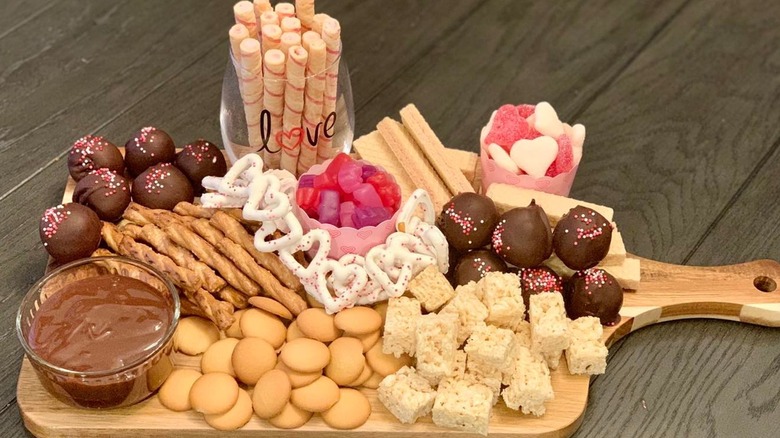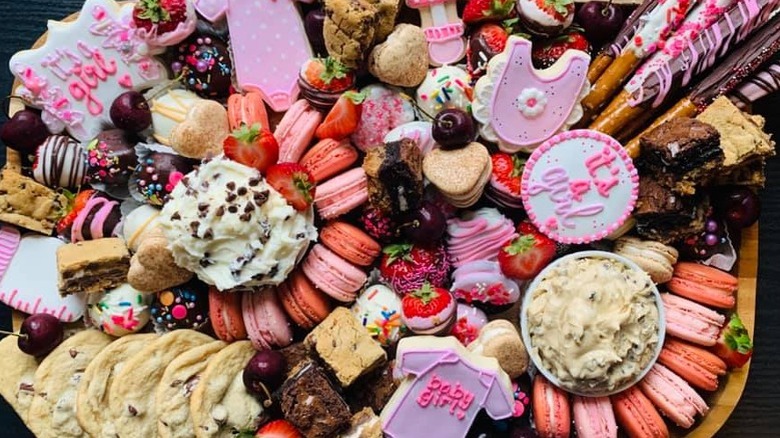Dessert Charcuterie Boards Are The Perfect Treat For Any Occasion
If you've ever been to a house party or dinner party, you've probably seen a charcuterie board before. It's that tray or board with various cuts of cheese, meats, olives, and those little crusty pieces of bread. While the purpose of a charcuterie board is mainly to offer a variety of appetizers and finger foods to keep guests sated while they wait for the main course, the model of a charcuterie board can be used for any occasion — even dessert.
Much like any other version, a dessert charcuterie board is designed to offer your guests an assortment of small sweets. These could be anything from miniature brownies and cookies (think chocolate chip, peanut butter, and oatmeal) to cupcakes and miniature pastries. If you have store-bought candies like fun-sized Reese's cups and gummy bears, those will perfectly accent your board. Much like how regular charcuterie boards usually have a dip or spread, you could include melted chocolate, caramel, or honey to dip your different confections in.
But making a dessert charcuterie board isn't as easy as dumping a bag of fun-sized Hershey bars onto a tray and telling your guests to dig in. When making a charcuterie board, whether for dinner or dessert, there are a few key areas you should be sure to focus on to give your board some extra variety.
Focus on creating different textures and flavors
There are no concrete rules to making a charcuterie board. You can add or omit whatever you want, but you should always focus on producing a variety of different textures and flavors available for guests to choose from. Try to appeal to different tastes — think salty things like hard nuts and soft cheese, smokey items like meats, and even focus on sweeter items like fresh grapes, blackberries, and honey.
The same should be said for a dessert board. To appeal to those who like salty and sweet snacks, try chocolate-covered pretzels or nuts, glazed popcorn, or sea salt caramels. A few bars of dark chocolate can provide some rich bitterness to complement all of the sweetness alongside some coffee or espresso-flavored treats. You can include soft foods like marshmallows, and chocolate-covered strawberries, and harder foods like peanut brittle. Make a section for gummy treats and another for pastries and baked goods.
Not every dessert charcuterie board needs candy
With all this talk of candy, you may think this sounds more like a child's birthday than an adult dinner party. While everyone does have their own version of a sweet tooth, you don't have to put focus exclusively on candy for your dessert board. In fact, so long as it's sweet and can be considered a dessert, it belongs on your board.
For example, if you want something that's bright, colorful, and relatively healthier than gummy worms and candy bars, you could use fresh fruit. So long as it is vibrant, it can go on the board. You can even use your choice of preserves to add texture and melted chocolate — white, milk, and dark — for dipping. Offset sweetness by adding snack foods like pretzels, peanuts, and popcorn to make it more of a snack board.
Because there are no concrete rules for making a charcuterie board, the designs are seemingly endless. You have complete freedom to do what you like with your charcuterie board so long as it keeps your guests happy.


